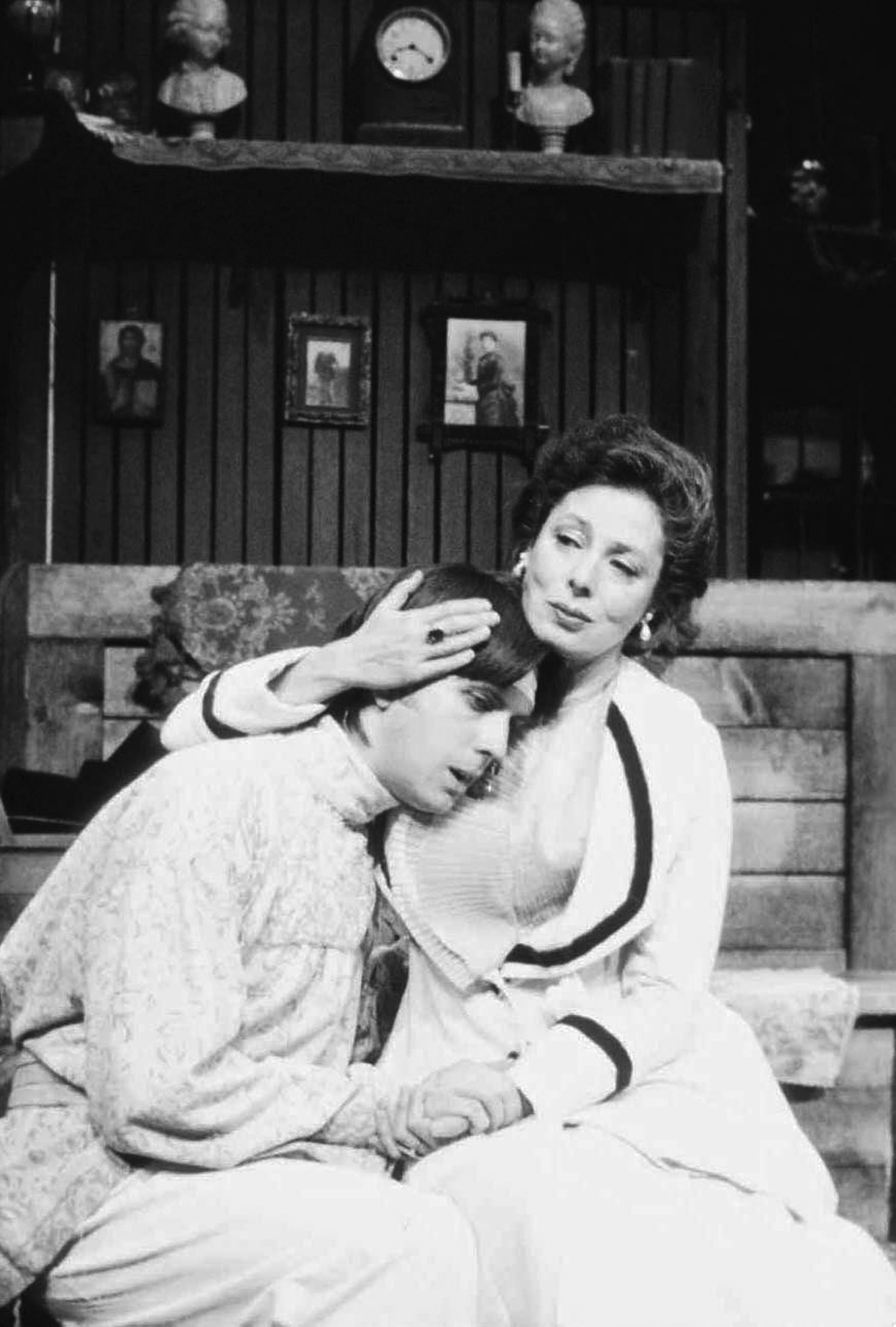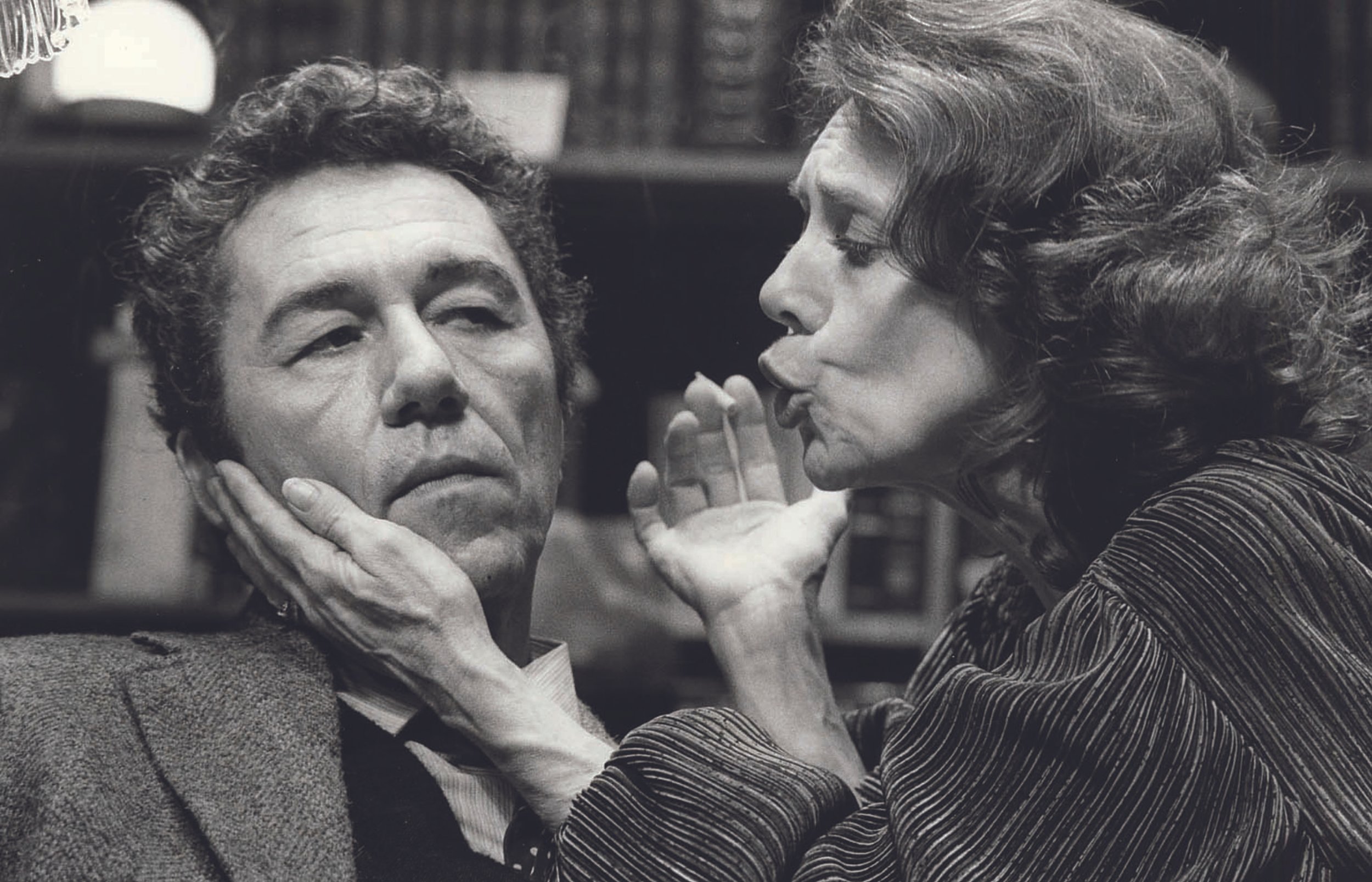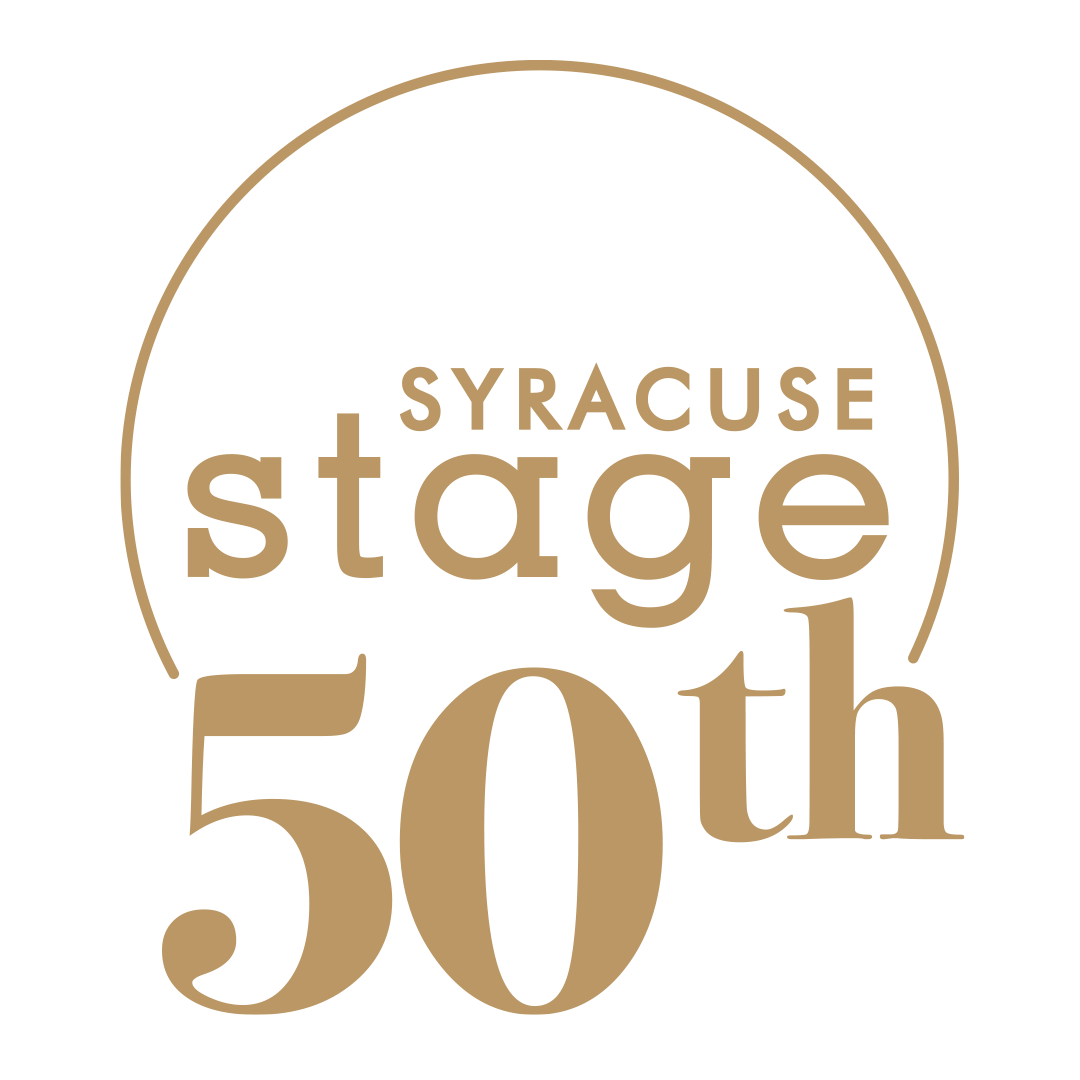
THE BEGINNING
Barry Snider (l) and John Carpenter (c) and members of the company in Clifford Odets’ Waiting for Lefty. Season: 1974. Director: Arthur Storch. Photo: Robert Lorenz.
On March 1, 1974, Syracuse Stage officially opened its doors and welcomed patrons to its inaugural production. In what he considered a risky choice, founding artistic director Arthur Storch selected two one-acts to introduce the new company: Clifford Odets’s Waiting for Lefty and Terrence McNally’s Noon. As “a child of the 30s,” Storch was an advocate of political theatre and he wanted to signal his interest from the start.
Storch came to Syracuse from a highly successful career in New York City through Department of Drama faculty member Leonard Dryansky, with whom he worked at the Berkshire Theatre Festival. Dryansky explained to Storch that after the Syracuse Repertory Theatre had closed, the University became interested in establishing another professional company that would be affiliated with the Department of Drama. The idea was to find one person who would run both, who would serve as artistic director of the new theatre and chair of the Department of Drama. Drynansky asked if he could submit Storch’s name for the post.
Arthur Storch
Arthur Storch with Jack Lemon
William Gibson and Arthur Storch on the opening night of the second production of The Butterfingers Angel.
Virgil Roberson, Tazewell Thompson, Lisa Pelikan, and David Wohl in William Gibson’s The Butterfingers Angel. Season: 1978 – 1979. Director: Arthur Storch. Photo: Robert Lorenz.
PHOTOGRAPHS 1974 - 1980

Cast members of "An Enemy of the People." Season: 1974.

Building a set in 1974

Cast members of "Noon." Season 1974.

Ron Frazier as George and Barry Snider as Lennie in John Steinbeck’s "Of Mice and Men." Season: 1974. Director: Arthur Storch. Photo: Robert Lorenz.

Dorothy Fielding as Stella, Virginia Kiser as Blanche Dubois, and David Canary as Stanley Kowalski in Tennessee Williams’ "A Streetcar Named Desire." Season: 1976 – 1977. Director: John Going. Photo: Robert Lorenz

Le Clanché du Rand as Cissy in "Loved" by Olwen Wymark. Season: 1978 – 1979. Director: Arthur Storch. Photo: Robert Lorenz.

Rita Gam as Arkadina and Mark Winkworth as Trepleff in Anton Chekhov’s "The Sea Gull." Season: 1976 – 1977. Director: Arthur Storch. Photo: Robert Lorenz.

Haskell Gordon as Sir Toby Belch, Alan Krass as Malvolio and Bobo Lewis as Maria in Shakespeare’s "Twelfth Night." Season: 1976 – 1977. Director: Bill Ludel. Photo: Robert Lorenz.

Alan Mixon as George and Meg Myles as Martha in Edward Albee’s "Who’s Afraid of Virginia Woolf?" Season: 1979 – 1980. Director: Terry Schreiber. Photo: Robert Lorenz.

Backstage "Of Mice and Men," Season 1974.

Backstage "Of Mice and Men," Season 1974.

Backstage "Of Mice and Men," Season 1974.
Storch was eminently qualified for the job. His career as an actor and director included six Broadway plays, four films (some might recall his spectacular death scene in The Exorcist), and more than 100 television shows. He was also a close associate of Lee Strasberg and deeply involved in the famed Actors Studio. His experience and his industry connections meant he could bring many well-known actors and directors to Syracuse Stage including Eli Wallach, Anne Jackson, James Whitmore, Audra Lindley, John Cullum, Jean Stapleton, David Canary, Dina Merrill, Myra Carter, Ray Wise, and Mike Kellen, among many others. He produced world premieres, notably William Gibson’s The Butterfingers Angel, and soon critics from national publications, such as The New York Times’s Mel Gussow and Newsweek’s Jack Kroll, began to notice the new “enterprising company” on the corner of East Genesee and Irving in Syracuse, New York. As longtime Drama faculty member Gerard Moses noted about one controversial production: “Some people liked it, some people didn’t, but everyone knew something exciting was happening.”
From season one to season two, subscriptions jumped from 300 to 1,800. By the time James A. Clark became the company’s managing director in season three, subscriptions had increased to 3000. A year later, there were 5000 subscribers and single tickets were in great demand. Syracuse Stage had outgrown the 200 seat Experimental Theatre and the old Regent auditorium was deemed unfit by Storch for the kind of theatre he was producing. A new space was needed.
Arthur Storch in The Excorcist, 1973.
Jim Clark addresses Department of Drama students in the Storch Theatre, 2008.
John Cullum as Cyrano, seated, with Lisabeth Bartlett as Roxane and Marcus Smythe as Christian above in Cyrano de Bergerac by Edmond Rostand, adapted by Emily Frankel. Season: 1983 – 1984. Director: Arthur Storch. Photo: Susan Piper Kublick.
An excerpt from an interview with Joseph Whelan in 1997 marking Stage’s 25th anniversary, Storch recalled some of the process that brought him to Syracuse.
-
“There were so many combined things going on. I was directing on Broadway, and part of the whole showbiz/New York scene. At the same time, I had been very active in the Actors Studio and part of the philosophic discussions about what theatre should be. By sheer coincidence, and oddly enough, it all started here, where I am speaking from, which is Stockbridge. The Syracuse University Drama Department had an apprentice program right here with the Berkshire Theatre Festival, and I was invited in to direct something on the main stage. And Leonard Dryansky was the faculty person in charge of the apprentice program. And he said to me, would I be interested in talking to the apprentice group under a tree one morning here on the grounds, about life in the big, bad city as a theatre person, an actor/director or what have you, and I said of course I would. I spoke to this group of probably 16 to 18 students, and after that he invited me to breakfast at Alice’s Restaurant, that famous Alice’s Restaurant which no longer exists. And at that breakfast he told me there had been a theatre in Syracuse, working in the same area as the [Syracuse] University Department of Drama, and the University at that time was interested in putting together a professional component with a teaching component, and someone up there came up with the idea of possibly having one person head up both units. Dryansky asked me if I was interested in being that person. Could he submit my name?
Of course, there was an enormous thought process: at that time, I was married, had a new baby who was a year, a year and a half old; my entire life was centered around New York City, where I was directing, or in London, or in Italy. Suddenly to think of leaving, of pulling up my roots and going to Syracuse—and it was a moment of truth for me, because I had been thinking, philosophizing about what a theatre should be; I had a lot of big ideas about what that should be. I then faced a moment of saying, well, you’ve expressed yourself vehemently on all of these subjects for years; here’s your opportunity to—the saying didn’t exist then—to walk the walk and talk the talk. And I decided to take a shot at it, thinking, well, let’s see if I can do it, let’s try it for a year or two, and see what happens. It ended up to be 18 years that I was there. And that’s how it started. I actually arrived in Syracuse on January 1, 1974, and decided to get the season up and running by March 1.”





